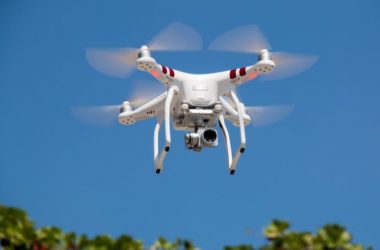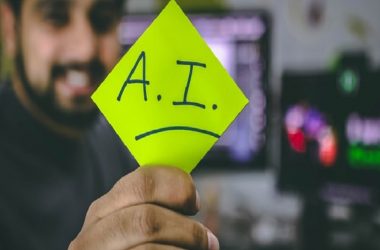
Introduction:
Accuracy is crucial in audio transcription, significantly impacting industry communication and documentation. Inaccurate transcriptions can lead to misunderstandings, errors, and inefficiencies. AI-powered audio transcription software utilizes advanced technologies such as speech recognition, machine learning, and natural language processing to deliver highly accurate transcriptions.
These technologies enable the software to analyze audio recordings, recognize diverse accents and speech variations, improve accuracy through machine learning, and understand spoken language in context.
The impact of accurate transcriptions is profound in industries like legal, healthcare, research, and business, where precise and reliable documentation of spoken content is essential for evidence, medical records, research analysis, decision-making, and project documentation.
AI-powered transcription software ensures that industries can rely on accurate transcriptions to enhance communication, streamline workflows, and improve efficiency.

The Strength of AI in Audio Transcription
Artificial intelligence (AI) plays a vital role in audio transcription software by leveraging advanced algorithms and machine learning models to improve accuracy, especially in complex audio recordings. AI algorithms are designed to analyze and understand spoken language, allowing the software to convert audio into accurate written text.
Improved Accuracy with AI Algorithms
AI-powered audio transcription software utilizes speech recognition technology, which involves training models on vast amounts of speech data to recognize patterns, phonetics, and language structures.
These models can adapt and improve over time, thanks to machine learning techniques. The software becomes more adept at accurately transcribing different voices and languages through exposure to diverse accents, speech variations, and linguistic nuances.
Noise reduction for transcription: The software employs algorithms to filter out unwanted sounds and focus on the primary speech, enhancing accuracy in challenging audio environments.
Speaker diarization: By utilizing speaker diarization algorithms, the software can identify and differentiate between multiple speakers, assigning each speaker their respective transcript segments.
Continuous Improvement through Machine Learning
The machine learning capabilities of AI-based transcription solutions enable continuous improvement in accuracy. As the software processes more data and receives user feedback, it can fine-tune its models and adapt to specific industries, domains, and languages.
Iterative learning process: The software’s iterative learning process allows it to enhance transcription performance over time, resulting in increasingly accurate transcriptions.
Enhancing Coherence and Readability
AI algorithms in audio transcription software go beyond basic transcription by understanding contextual cues, sentence structures, and grammar rules. This understanding enhances the coherence and readability of transcriptions, capturing the speaker’s intended meaning and improving the overall quality of the transcribed content.

Empowering Professionals with Accurate Transcriptions
AI empowers audio transcription software to handle complex audio recordings and deliver highly accurate transcriptions. Through advanced algorithms and machine learning models, AI enables the software to:
Recognize speech patterns: AI algorithms allow the software to recognize various speech patterns, enabling accurate transcription even with diverse accents and languages.
Adaptability: The software’s adaptability to different accents and languages makes it a valuable tool for professionals across industries who rely on accurate and accessible written records of spoken content.
In essence, AI-powered audio transcription software, with its advanced algorithms and machine learning models, significantly improves accuracy and revolutionizes the efficiency and reliability of audio transcription. This technology benefits a wide range of industries and professionals who depend on precise and accessible written records of spoken content.
Enhancing Accuracy through Advanced Speech Recognition
Artificial intelligence (AI) plays a crucial role in audio transcription software by leveraging advanced speech recognition technologies. AI-powered software utilizes sophisticated algorithms to analyze and understand spoken language, enabling accurate transcription.
Advanced speech recognition technologies, driven by AI, are trained on vast amounts of speech data from various accents, languages, and speech patterns. These technologies can recognize and interpret the nuances of different voices, allowing the software to transcribe diverse spoken content accurately.
The benefits of these advanced technologies are significant. They enable audio transcription software to effectively handle recordings with different accents, dialects, and language variations, ensuring accurate transcriptions regardless of the speaker’s background.
AI-powered algorithms adapt and improve over time, continuously enhancing their ability to recognize and interpret speech patterns, resulting in higher transcription accuracy.
By leveraging AI-driven speech recognition technologies, audio transcription software brings numerous advantages. It facilitates efficient and reliable documentation, eliminates manual transcription, and enhances team communication.
The software’s ability to accurately transcribe different accents, languages, and speech patterns ensures that valuable spoken content can be effectively converted into written text, benefiting industries such as healthcare, legal, research, and others.
Language and Context Understanding
AI-powered audio transcription software revolutionizes converting spoken words into text. These advanced systems excel at deciphering language nuances and context, capturing tone, sentiment, and contextual cues. They are indispensable tools for transcriptionists, researchers, and content creators.
Precise transcriptions: Accurate audio-to-text conversion software tackles challenges like homonyms, acronyms, and specific terminology, delivering precise transcriptions through contextual analysis and machine learning.
Deciphering context: These systems decipher the intended meaning of ambiguous words based on surrounding context, enhancing transcription accuracy.
Specialized terminology: Extensive language models and dictionaries enable accurate recognition and transcription of industry-specific terminologies.

Noise Reduction and Audio Enhancement
AI algorithms play a pivotal role in noise reduction and audio enhancement, improving the clarity and accuracy of transcriptions.
Background noise reduction: AI-powered algorithms identify and suppress unwanted noise, enhancing speech intelligibility.
Spectral subtraction: This technique analyzes the audio signal’s frequency spectrum to estimate and subtract noise components, resulting in clearer speech.
Denoising algorithms: Deep learning-based denoising algorithms effectively separate speech from background noise, producing focused transcriptions.
Audio normalization: AI algorithms adjust audio levels for a balanced and uniform output, improving transcription accuracy and interpretation.
Customization and Adaptability
AI-powered audio transcription software offers customization options for enhanced accuracy and adaptation to specific needs.
Vocabulary adaptation: Users can provide a custom vocabulary list for accurate transcription of industry-specific terminology.
Speaker identification: Training the software to recognize speakers enhances accurate attribution of speech in transcriptions.
Fine-tuning parameters: Users can customize settings related to noise reduction, audio normalization, and language preferences to optimize performance.
Integrations and Workflow Optimization
AI-powered transcription software seamlessly integrates with various platforms and applications, enhancing workflow efficiency and collaboration.
Importing files: Integration with video conferencing tools, content management systems, or transcription services enables easy file import for transcription.
APIs and SDKs: Developers can integrate transcription capabilities directly into their applications or services, ensuring a cohesive user experience.
Automated transcription: AI-powered software significantly reduces time and effort required for manual transcriptions, boosting productivity.
Collaboration: Multiple users can access and work on transcriptions simultaneously, facilitating efficient collaboration and real-time editing.

Conclusion:
AI-powered audio transcription software utilizes advanced technologies like speech recognition, machine learning, and natural language processing to deliver highly accurate transcriptions. It excels in analyzing audio recordings, recognizing accents, and understanding context.
This transformative solution enhances transcription accuracy, streamlines workflows, and boosts productivity. By adopting AI-powered transcription software, industries and professionals can optimize their transcription processes and benefit from precise and efficient documentation.
FAQs:
How does AI-powered audio transcription software achieve higher accuracy compared to traditional methods?
Advanced speech recognition, language understanding, and noise reduction technologies play a crucial role in improving the accuracy of audio transcription.
Speech recognition technologies driven by AI are trained on vast amounts of speech data, enabling them to recognize patterns, phonetics, and language structures. These technologies adapt and improve transcription accuracy, especially in complex audio recordings with diverse accents, dialects, and language variations.
Can AI-powered audio transcription software handle multiple speakers in a recording?
Advanced speech recognition software employs speaker diarization algorithms to identify and differentiate between speakers, which significantly contributes to accurate transcriptions. These algorithms analyze audio recordings and assign each speaker their respective transcript segments.
Speaker diarization techniques utilize various characteristics such as voice pitch, speaking style, and speaker turn-taking patterns to identify individual speakers.
Can we train the AI-powered audio transcription software for industry-specific terminology?
The AI-enhanced audio transcription software and tools offer powerful customization options that enable users to train it for specific vocabulary and terminology. One option is creating a custom language model by providing training data relevant to their domain or industry.
By incorporating specialized texts, documents, or datasets into the training process, users can enhance the model’s understanding of domain-specific terminology and improve its ability to generate contextually appropriate responses.









